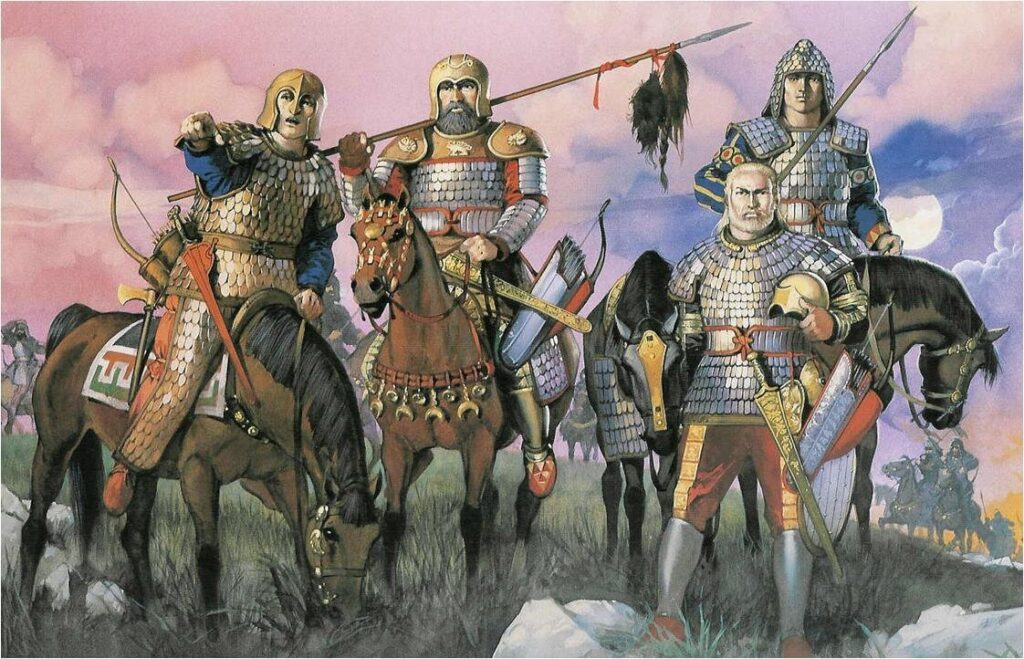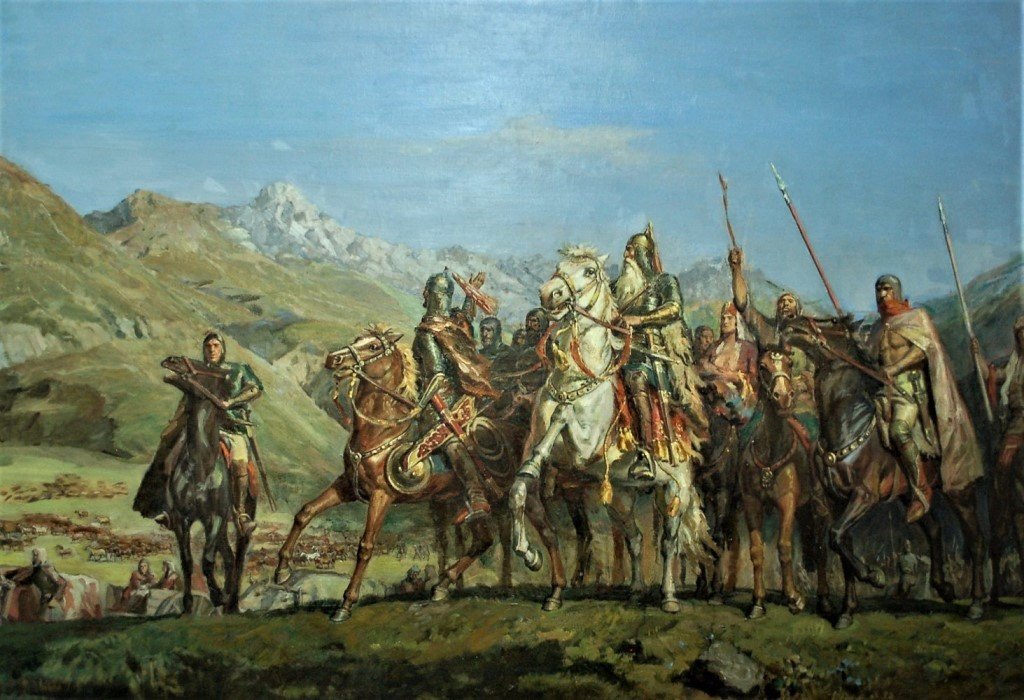On the eve of the Mongol strike, the North Caucasus was a place of survival for warlike tribes. The most important was the Alanian kingdom. The last shard of the powerful state of the Sarmatians, the legendary Scythian tribes. The Sarmatians came to the shores of the Sea of Azov and the Caspian Sea in the 2nd millennium BC.
For the ancient Greeks, the Scythians and Sarmatians were the name of one people. They were peoples of one ethnos, speaking a similar language. The Sarmatians quite quickly created a strong state on a vast territory.

picture of an Alanian artist
The Sarmatian tribes of the Alans settled in the Northern Black Sea coast. They penetrated into the Caucasus, all the way to Turkey. The end of Sarmatian domination came in the II-II centuries A.D. First the Goths, then came the Huns from the East. Most of the Sarmatians joined them and went to Europe. The rest in the form of Alanian tribes took refuge in the valleys of the Caucasus. Under the protection of mountains and few passages.
This is how the Alanian kingdom in the North Caucasus, or Alania, came into being. The state did not have Sarmatian power, but it was the strongest in the region. And partly Christian: «Coming from the left side of the possessions of the king Serir, you go for three days through the mountains and meadows and finally come to the king of the Alans. The king of the Alans himself is a Christian, but most of the inhabitants of his kingdom are kyafirs and worship idols».

Caucasian peoples 6th century A.D.
«Then you pass, ten days’ journey through rivers and forests until you reach a fortress called Bab-al-Lan. It is situated on the top of a mountain. The wall of this fortification is guarded every day by 1000 men; they are garrisoned, day and night» (Al-Bekri,11th century)
Caucasian Lion
In the 10th-11th century, the Alanian kingdom was a strong ally of the Byzantine Empire. Constantine IX Monomakh grants the title of master to Constantine of Alan and marries the daughter of the Alanian king. Armored Alanian cavalry will beat Franks Voemund Antiochian in Epirus, and then Turks Sultan Melik-Shahav structure of the Byzantium army.
Regular wars against the Persians would also unite the Caucasus. And since XII century the Georgian kingdom is in alliance with Alania. Thanks to Tamara the Great, daughter of Alania Vurdukhan and her husband — Alania’s co-emperor David Soslan. On the other hand local tribes — Lezgins, Circassians, Abkhazians, Vainakhs (Ingush/Chechens), etc. would ally Alans. The main ally of the Alans in the North will be the Kipchaks — the masters of the Great Steppe.
«This is a country with a large population in the valleys and mountains. 1000 villages are so densely located to each other that when some roosters shout, all others respond to them.» (Masudi, 10th century). The territory of the Alanian kingdom besides the Caucasus included the Terek and the Kuban steppes

ALANIEN — Alanian kingdom, XI- XIII cc.
The kingdom was ruled in the capital Magas by one of the ancient clans of the Sarmatian aristocracy. The king was called Muztazkhir. Each noble clan supplied its own clan detachment, the detachments formed the Alanian cavalry. The allies/vassals formed the infantry. And the population formed the militia. A description of the infantry formation of the mountain Vainakhs has come down to us — the makaj, a wedge of warriors positioned in front of the Alanian infantry formation.
Armor and Blow
The army of the Alanian king was up to 30,000 including vassals and popular militia. The core were 3,000 shock aristocratic cavalry. Even since the time of the ancient Sarmatians, the Alans were famous for their heavy armored spear cavalry.
Many historians connect the appearance of European knights with the Alans who went to Europe. Caucasian Alans retained this tradition, and thanks to the famous Caucasian forges there was no shortage of armor. Looking ahead — the Mongols paid tribute to the strength of Caucasian Alanian cavalry.

The Alans were famous for their armored cavalry
Equals among the Best
According to Chinese chroniclers it was a «divine army», whose warriors had «hearts of tigers and wolves». The chroniclers of the Celestial Empire called them «Usuni», Mongols — «Asuts», Iberians — «wasps and oats», Russians called them «Yasses». In opinion of historian Vernadsky, the ruling elite of east Slavs-Ants had Alanian roots.
The name of Genghis Khan’s grandmother Alan-Koa is translated as «beautiful Alanka», and heavy armored cavalry was borrowed by the Mongols exactly from the Caucasian Alans. In the XIII century the great Alania will meet its last enemy — the Mongols and the Scythians will give their last battle. It will be the fiercest for Genghis Khan’s empire in the West.
